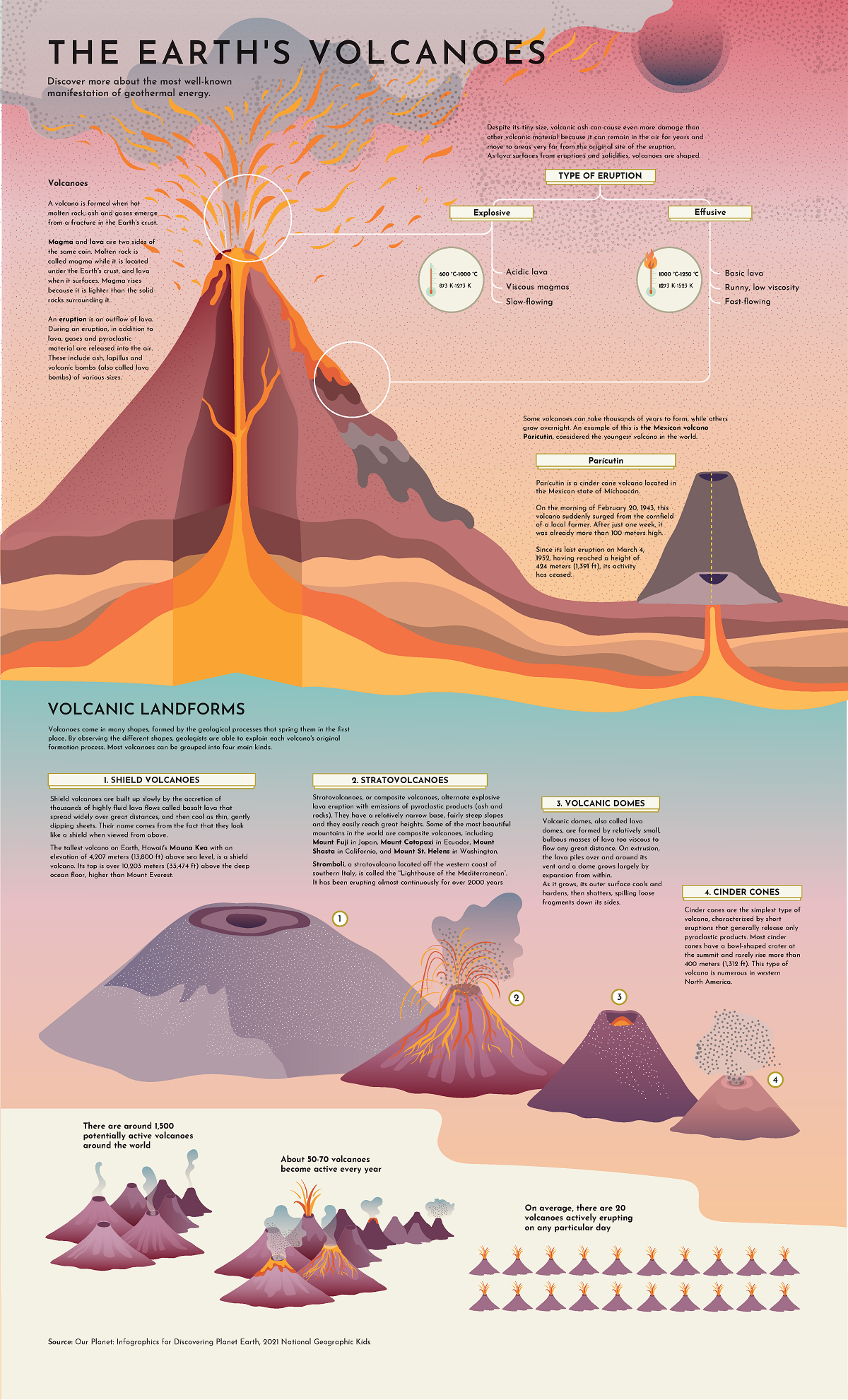
A volcano is a location on the surface of the earth where magma has erupted out of the interior of the planet.
Magma is a molten rock, which has melted from the extreme heat (2200 C to 5000 C) and pressure that exists
inside the earth. Once molten rock has erupted onto the earth's surface, it is called lava. As lava spreads out
on the surface, it cools and becomes solid rock again. The buildup of lava forms hills and mountains on land,
and it forms islands if the volcano began on the ocean floor. The Hawaiian Islands, for example, exist because
of volcanoes.

Volcanoes are classified as active or inactive. Inactive volcanoes are older and have usually erupted many times. A volcano is described as active if it is currently erupting or expecting to erupt eventually.
A volcanic eruption occurs when lava, gasses, and other subterranean matter come out of the ground. The exact location of where they come out is called a vent. A volcano usually has more than one vent.
Eruptions can be violent or quiet. Some eruptions send lava high above the surface in spectacular fountain
shapes. Quiet eruptions consist of lava simply flowing out of vents. Both eruptions can also have gasses, such
as sulfur and fluorine, coming out of the vents.

heres a video of a volcano erupting!
Even after a volcano stops erupting, gasses and vapors are still released. Some volcanoes, however, can end one period of eruptions and begin another after many years. Eventually, the volcano reaches the cooling stage. While the volcano cools, it reduces in size from water and weather erosion.
